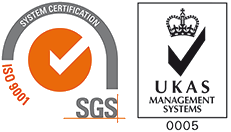How Technology Improves Quality of Learning
Emerging technologies are improving a range of learning fields; including the quantity of student and, teacher interactions online. But the quality of learning is arguably diminished.
Innovators are creating more educational software tools tailored to improve learning and ease communication online.
Now a learner can easily get a hard mathematical problem solved online than in the past.
However, there are growing concerns that technology may diminish the quality of student learning because now, teachers are more keen on teaching students to learn on their own than lean on the traditional interactive teaching which emphasized imparting skills that would make learners competitive on the job market.
This has triggered fears that overreliance on technology could have a negative impact on students’ learning because learners can easily get all the information they want online.
The voices against reliance on technology argue that students are less likely to sit in a library and do academic research, which compromises the quality of education.
They point to the increased cases of plagiarism and cheating, which have led to a decline in students’ analysis and critical thinking abilities.
On the internet, students are more likely to spend more time on computer games or other entertainment resources and social media than read academic material or do their homework.
Examining teacher technology use
In a collaborative study titled, Examining teacher technology use, researchers; Michael Russell, Damian Bebell, Laura O’Dwyer and Kathleen O’Connor of the Boston College, USA, argue that teachers’ attitudes and beliefs toward technology are of great importance in their decisions to adopt and frequently use technology in the classroom.
On her blogging platform, Canadian tech journalist Vawn Himmelsbach argues that even in situations where technology is viewed as a distraction rather than an aid to education, instructors can harness the power of digital devices, apps and tools to increase engagement, encourage collaboration, spark innovation and enhance student learning.
“With an Internet connection, we have access to information at our fingertips 24 hours a day. We can find almost anything online, in its most upto- date version. For students, this means access to everything, from research materials, and educational apps, to interactive edutainment and open resources from prestigious universities around the world. They may, however, need instruction on how to find credible resources and direction on providing proper attribution when they use them,” Himmelsbach wrote.
She further wrote, “Students can also supplement their learning by connecting with online groups and virtual communities in real time, or by collaborating on group projects with tools such as wikis and cloud-based apps. And instructors can provide access to course material (and additional resources) by setting up portals through learning management systems or providing access to course-specific software for each learner. Blended learning — a mixture of classroom technology and face-to-face learning—is a popular way of organizing this.”
With the power of technology it is easy to create a dynamic, digital, and handson learning experience that is tailored, flexible, and relevant, developing the talent needed to power the digital economy.
Laptops, tablets or a smartphone are replacing books that students carry to classrooms.
Opportunities for communication
“Opportunities for communication and collaboration have also been expanded by technology. Traditionally, classrooms have been relatively isolated, and collaboration has been limited to other students in the same classroom or building. Today, technology enables forms of communication and collaboration undreamt of in the past.” reads an article on Purdue University’s blogging platform.
“Students in a classroom in the rural U.S., for example, can learn about the Arctic by following the expedition of a team of scientists in the region, read scientists’ blog posting, view photos, e-mail questions to the scientists, and even talk live with the scientists via a videoconference. Students can share what they are learning with students in other classrooms in other states who are tracking the same expedition. Students can collaborate on group projects using technology-based tools such as wikis and Google docs. The walls of the classrooms are no longer a barrier as technology enables new ways of learning, communicating, and working collaboratively.”
In a foreword for the British government department of Education’s strategy for education providers and the technology industry published in April 2019, former Secretary of State for Education, Damian Hinds stated, “Technology is often associated with increased automation and reduced human interaction, although within the education sector it will never replace the role of our great teachers.”
Hinds opined that good use of technology can help in dealing with some of the challenges faced in the education sector.
“Grimsby Institute of Further and Higher Education uses virtual and augmented reality to better prepare students for vocational careers. Nottingham Trent University is using data to help understand their students’ engagement with their chosen degrees, allowing tutors to target interventions to better support their students,” Hinds stated.
“These institutions face their own daily challenges, but they are all using technology for a purpose: to drive student engagement and attainment and to support effective working environments where staff can focus on teaching,” he added.
According to a report by Center for Applied Research in Educational Technology (CARET), there is growing evidence to support the assertion that 21st-century information and communication tools as well as more traditional computer-assisted instructional applications can positively influence student learning processes and outcomes.
This particular research conducted by John Cradler, Mary McNabb, Molly Freeman and Richard Burchett emphasizes the importance of using technology and collaborative learning methods and leadership aimed at technology planning for school improvement purposes.
The report also shows that technology tools for constructing artifacts and electronic information and communication resources support the development of higher-order thinking skills.
R. Raja and, P. C. Nagasubramani of the department of Pedagogical Sciences at India’s Tamilnadu Teachers Education University, in an April 2018 report titled; Impact of modern technology in education points out that use of modern equipment technology and tools, makes learning more interesting for students and more interactive.
“The transfer of knowledge becomes very easy and convenient, as well as effective. What this means is, that our minds now tend to work faster when assisted with the use of modern technology,” the report partly reads.
With the power of technology,
it is easy to create a dynamic,
digital, and hands-on learning
experience that is tailored,
flexible, and relevant, developing
the talent needed to power the
digital economy.
Greater engagement
According to a 2009 report titled, Using digital technologies to promote inclusive practices in education published by Futurelab – a UK based independent not-for-profit research and development organization focused on digital media and learning, technology has, improved motivation, engagement and independence in learning.
Among other benefits, the report notes that technology has led to increased collaboration, greater engagement and persistence, more on-task behavior and better conceptual understanding.
“It improved learners’ motivation and they learned to take responsibility for their own learning. It also helped them build relationships with others. In particular, technologies with strong visual elements – such as digital video, drama-oriented software and multimedia presentations – can be effective ways of engaging learners,” partly reads the report compiled by Futurelab’s Dr Leila Walker and Ann Logan, an education consultant.
In his 2017 study titled; The effects of technology on student motivation and engagement in classroom-based learning, James Francis of the University of New England argued that the goal of educators should be the integration of existing technologies for productive learning.
“Today’s generation of students is growing up in the information age. Access to a variety of technology and the internet is not only accessible, but necessary. To be most effective, students must be taught in a manner in which they learn best. When put into a technology supported environment that is more conducive to their students’ learning style, teachers can utilize a variety of technologies that have the potential to engage students and support constructivist approaches to learning,” Francis wrote.








